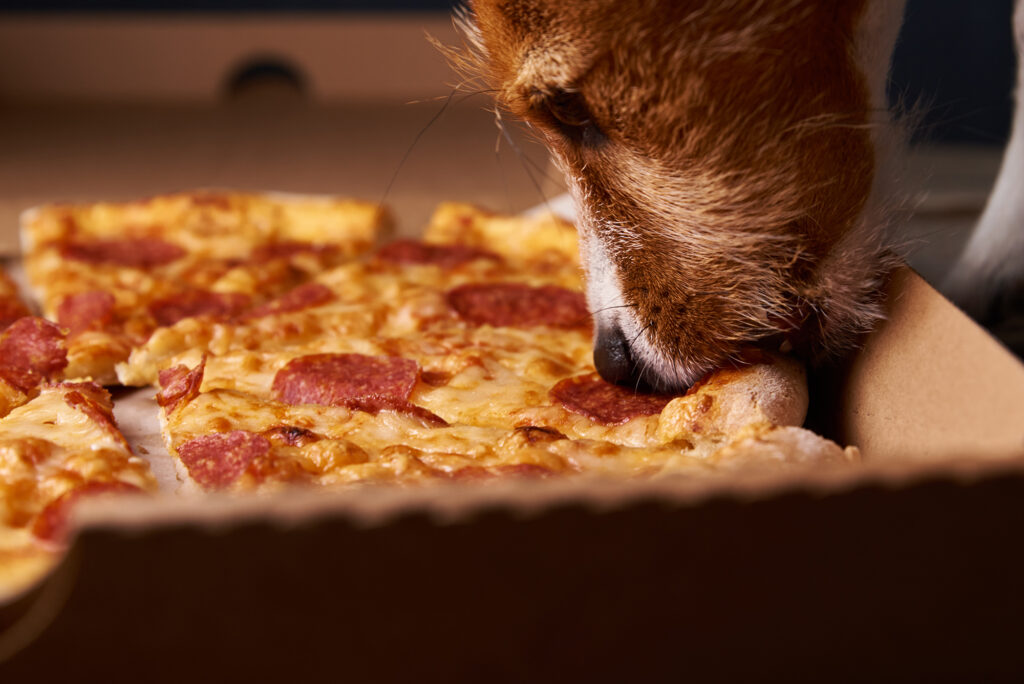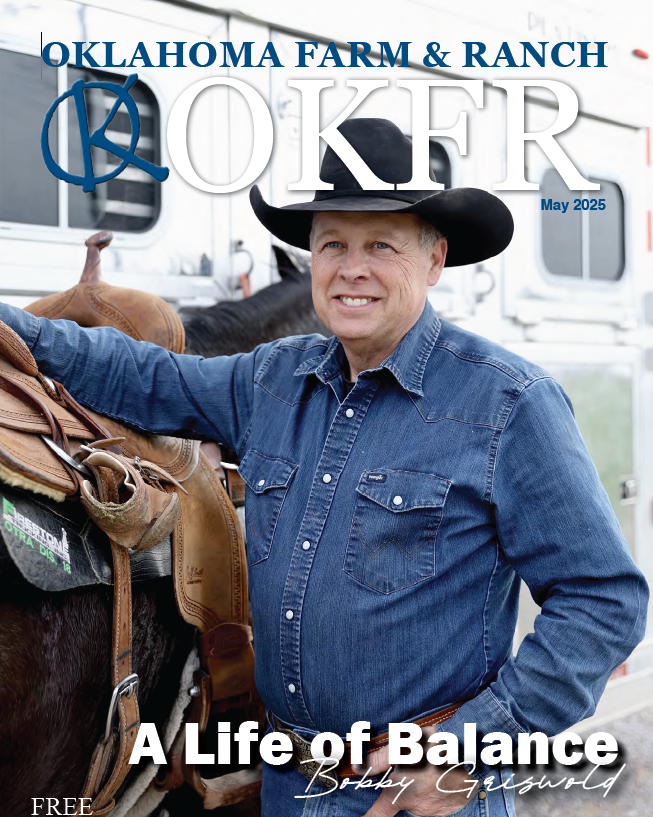Country Lifestyle
Western Housewives – June 2024
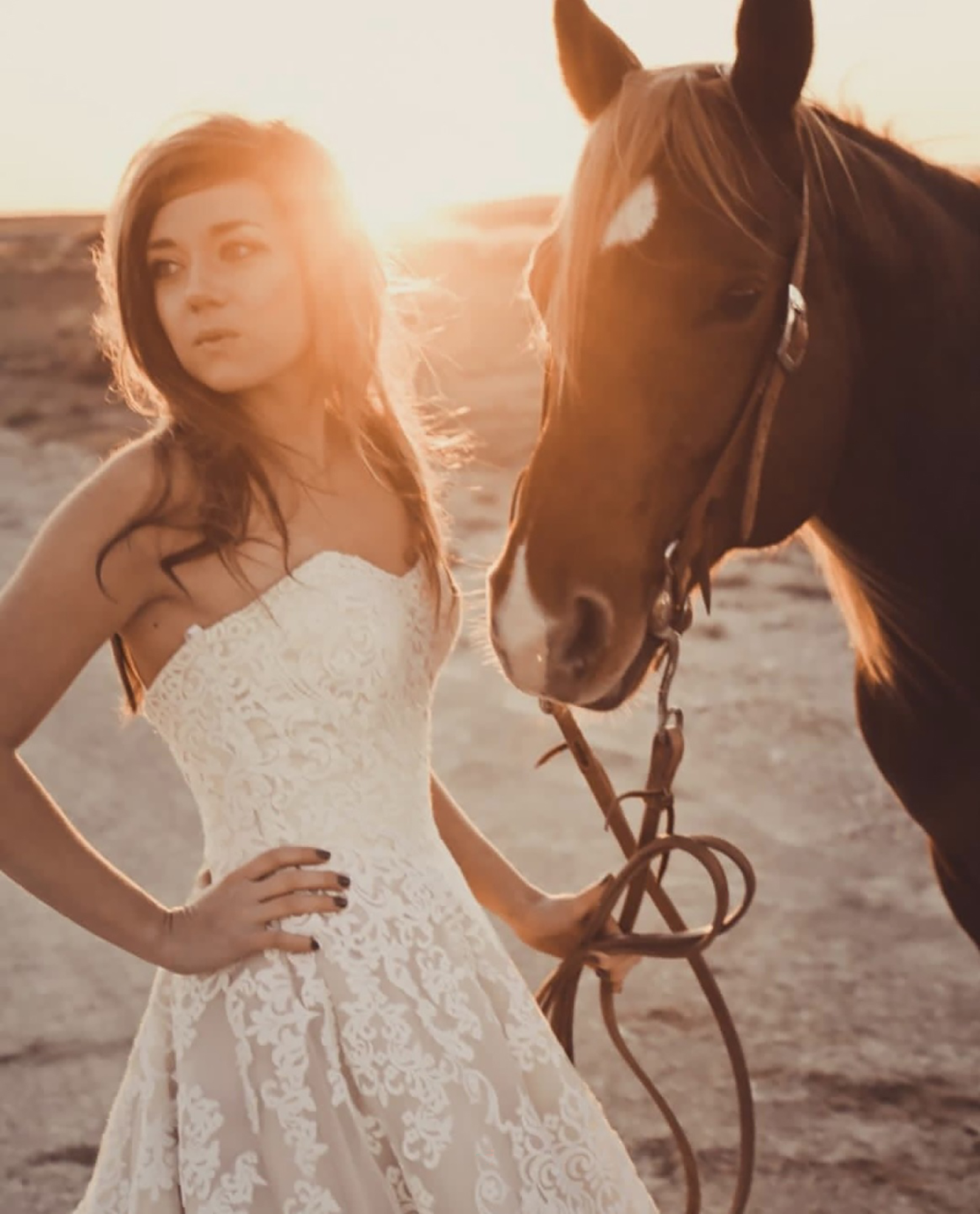
Life consists of small events that define us. Sometimes, it’s something as simple as eating cake with your two-year-old at midnight at your sister’s wedding. Sometimes, it’s something as painful as taking your two-week-old to the emergency room with RSV and living there for a week. Both are moments that changed me, and both are moments that I’ll remember forever.
Often my defining moments have happened on the back of a horse. I guess that is because that is where I have spent most of my life. It has made me pay special attention to each horse I have ridden during different stages of my life.
My first horse was a big bay horse that was must have reminded me of Greek mythology because it took me about two seconds to name him “Hercules.” He was the perfect mount for a five-year-old that acted tough but was secretly scared of her own shadow. Once I got Hercules, I could start going to work with my dad. We gathered wheat pastures and road pens, and he let me sit in the round pen on Hercules while he worked his sale horses. At the ripe age of five I was a pretty seasoned pen rider and had the sour disposition to prove it.
One morning we had a lot of wheat pasture freshies to turn out. Naturally, they ran off as soon as they got off the truck. Babies cry, and wheat pasture cattle run off the truck; I don’t make the rules.
My Dad had to leave me and get in front of the herd to keep them from crashing into the fence. I’m sure he told me just to stay put, but Hercules got excited by all the commotion and started following the impending stampede. Now I realize that I was safe the entire time, but, at that moment, I was certain my life was over. I was dramatic even as a youngster. Would Hercules ever stop? Would he try and jump the sprinkler tracks? What if he runs through the hot wire? And most importantly, what will I tell my friends?
About the time I was ready to jump into the dirt my Dad ran up beside me and helped me stop Hercules. I was safe, my adrenaline was pumping and I was promised an Allsup’s Coke for all my troubles. That was a defining moment in my life. I realized the more danger you got yourself in to, the much bigger the condolence award. As long as I was able to keep it to an Allsup’s Coke level of danger I would be just fine.
The next horse I truly loved was named “Alotofbull” He was anything but full of bull. He was big, cowy, and athletic. He scared me just a little but that’s what made me love him the most. My Dad and I won countless events on Alotofbull. My Dad has true horsemanship pumping through his veins, but I can only credit my riding success to Alotofbull. He made things easy for me and I felt I was nothing without him.
Even after all the ribbons, the moment I remember the most about him wasn’t in the showpen. it was in the middle of nowhere on a place we called “The Cain.” The Cain was where I spent many fall afternoons and summer mornings. It was full of Sandhills, cactus that were found of my backside every time my seat left the saddle, and absolutely no sign of civilization. We would push cows to water, move pastures, and do other slow-paced things that were good for the horse and for the mind. I loved it there.
One afternoon in the middle of June, my Dad and I were moving some cattle to water. After we were done we came upon a set of old pens that my Dad had branded calves in with his Dad a long time ago. My Dad got quiet and solemn. Traits that were unusual for him. He started to reminisce of times long ago and told me how much he wished all his kids had gotten to know his Dad before he had passed away many years prior. I was only 14 at the time, and I was having trouble holding back tears myself. I leaned forward and played with Alotofbull’s black mane. I knew my grandfather had been a special man and I knew my Dad had cherished him. It made me see my Dad in a different light going forward. Yes, he was strong and resilient, but he was also human, just like the rest of us. He had a vulnerability in his life, too. It was a moment that taught me not to be afraid to talk about the hard stuff but to always press on. No matter what.
Many years later, I found myself in beautiful Oklahoma on a horse named “Reuben.” He was my then-boyfriend’s horse and was the only quick and little horse I had ever ridden. He was spunky and made me feel like better help than I was as we gathered pairs to wean that morning.
The sun was just coming up over the cottonwood trees, making the dewy grass shine. I looked over at the man beside me and just knew I would spend the rest of my life doing this very thing with him. I didn’t care if we ever had money or much of anything, really. As long as we were together, loving God, and riding good horses, I didn’t care about anything else.
About 12 hours later, after a long day and a few incidents that may or may not have involved me getting run over by a yearling, that same man proposed to me. We had never talked about it out loud, but I guess God had put it in both of our hearts. It was a moment that, of course, changed the rest of my life. It taught me not to overthink things when they are right and that an Oklahoma cowboy was just what my life needed.
I’ve had many horses and many defining moments in my life. Sometimes, I have loved the horse, and sometimes, I have not. The same goes for the moments. Nevertheless, each horse and moment has taught me something. After all this time, I am convinced that no matter how old I get, I will never be too old to ride a good horse because I will never be too old for a defining moment.
That being said, if one or two of my life lessons could involve another Allsup’s Coke, that’d be all right by me.
Country Lifestyle
Farm Dogs & Table Scraps
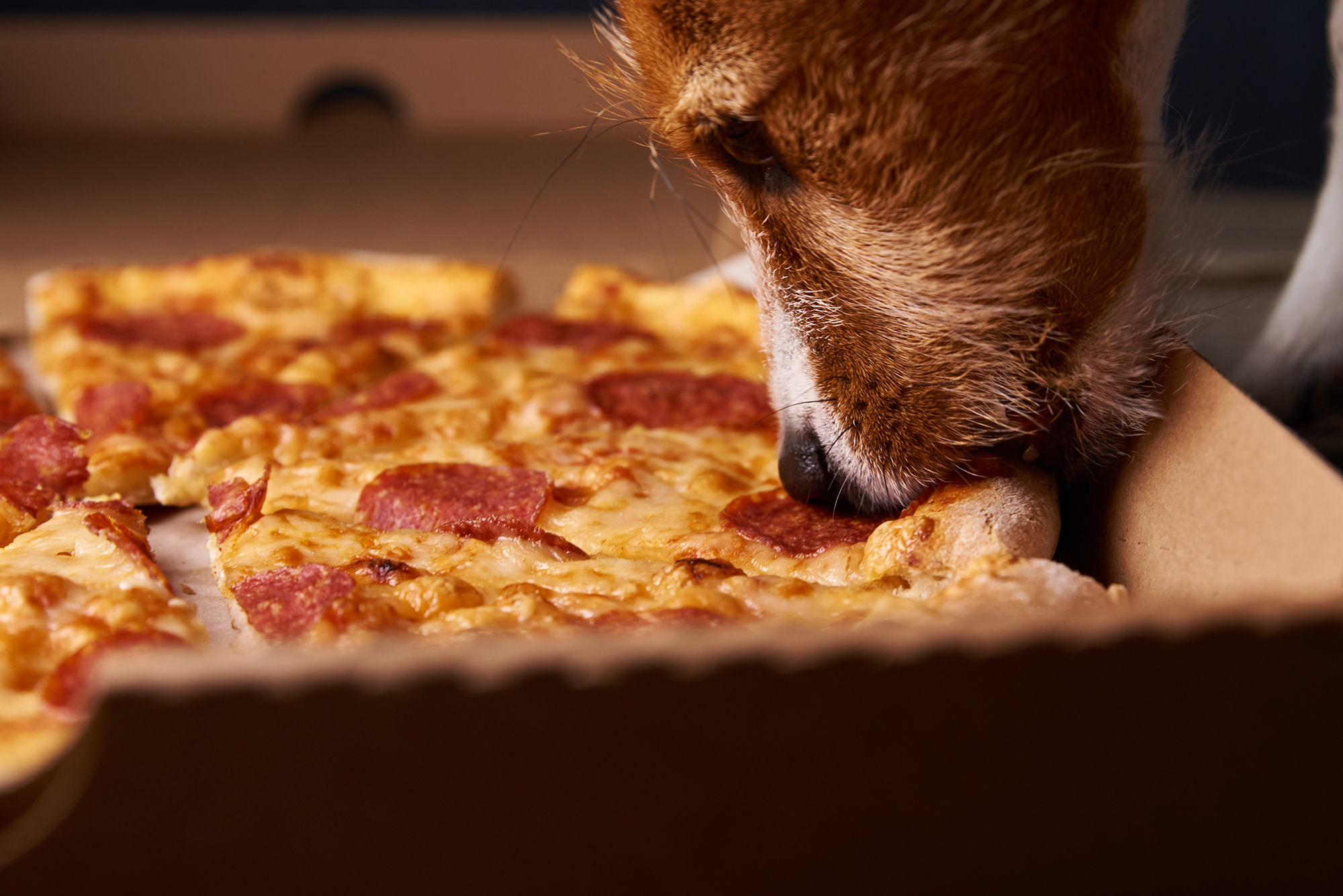
What’s Safe and What’s Not?
Growing up on a farm, our dogs were tough. They roamed the pastures, slept under the barn, and ate just about anything they could get their paws on—whether we meant for them to or not. I’ll admit, I never thought twice when one of our old cow dogs snatched a biscuit off the table or licked up a spill from the barn floor. I’ve even seen a dog steal a whole rib bone off a plate and trot off like he’d won the lottery. And somehow, they always seemed fine.
But here’s the thing—just because they survived doesn’t mean it was safe. For every farm dog that lucked out, there’s another that wasn’t so fortunate. Some human foods can be downright toxic to dogs, and a little bit of bad luck (or a smaller, more sensitive dog) can turn a harmless snack into an emergency.
Common toxic foods lying around the farmhouse
If you’ve got a farm dog—or any dog, really—you need to be aware of the dangers lurking in everyday foods. Some of the biggest culprits include:
Chocolate – The darker it is, the worse it is. Even a little can cause vomiting, seizures, or worse.
Grapes & Raisins – No one’s exactly sure why, but they can cause kidney failure fast.
Onions & Garlic – In large enough amounts, these can destroy red blood cells, leading to anemia.
Xylitol (Found in Sugar-Free Gum & Candy) – This artificial sweetener can send a dog’s blood sugar crashing and cause liver failure.
Alcohol – Even small amounts can be deadly to dogs, affecting their nervous system much more than it does ours.
Bones from Cooked Meat – While not necessarily toxic, they can splinter and cause serious internal injuries.
Macadamia Nuts – These can lead to weakness, vomiting, and even paralysis in dogs.
What to do if your dog eats something toxic
First, don’t panic—but don’t ignore it either. If you know your dog ate something dangerous, call your vet immediately. They can tell you whether to induce vomiting or if it’s something that requires urgent care. If it’s after hours, contact the ASPCA Animal Poison Control Center (888-426-4435) or the Pet Poison Helpline (855-764-7661).
Prevention is always the best medicine, so keep toxic foods out of reach. That might mean keeping the trash can secured, making sure kids don’t slip the dog a treat under the table, or just being more mindful of what’s left on the counter.
Our farm dogs might have been lucky, but luck isn’t a great strategy when it comes to their health. A little awareness goes a long way in making sure they stay happy, healthy, and ready for the next day’s work.
For more information
ASPCA Animal Poison Control: www.aspca.org/pet-care/animal-poison-control
Pet Poison Helpline: www.petpoisonhelpline.com
Visit www.akc.org/expert-advice/nutrition/foods-your-dog-should-never-eat
Country Lifestyle
Summer Squash and Corn Chowder

By Lacey Vilhauer
Total time: 40 minutes
Servings: 6-7
Ingredients
- 6 slices bacon, cooked and crumbled and 1 1/2 Tbsp rendered bacon fat reserved
- 1 1/2 lbs yellow squash, chopped (about 3 medium)
- 2/3 cup thinly sliced celery
- 1 cup diced onion
- 1 Tbsp flour
- 2 cloves garlic, minced
- 2 3/4 cup milk (I used 1%)
- 5 cups canned or fresh cut corn (from about 6 ears corn), divided
- 1/2 cup heavy cream
- 1 1/2 tsp chopped fresh thyme (or 1/2 tsp dried)
- 3/4 tsp salt, then more to taste
- 1/4 tsp freshly ground black pepper, then more to taste if desired
- 3/4 cup shredded cheddar cheese, for serving
- Chopped green onion for garnish (optional)
Instructions
Heat 4 tsp reserved bacon fat in a large pot over medium-high heat. Add celery and onion and sauté 2 minutes then add the squash.
Saute until tender, about 6 minutes, adding in garlic and flour during last 2 minutes of sauteing. Reduce heat slightly.
Add 1 1/2 cups milk, 2 cups of the corn, thyme, salt and pepper to the sauteed veggies.
To a blender add remaining 3 cups of corn, remaining 1 1/4 cups milk and the cream. Process in blender until nearly smooth (about 30 seconds).
Add pureed mixture to pot and stir to blend. Cook until mixture reaches a light boil.
Serve warm with shredded cheese, crumbled bacon and sliced green onions if desired.
Country Lifestyle
Western Housewives – May 2025
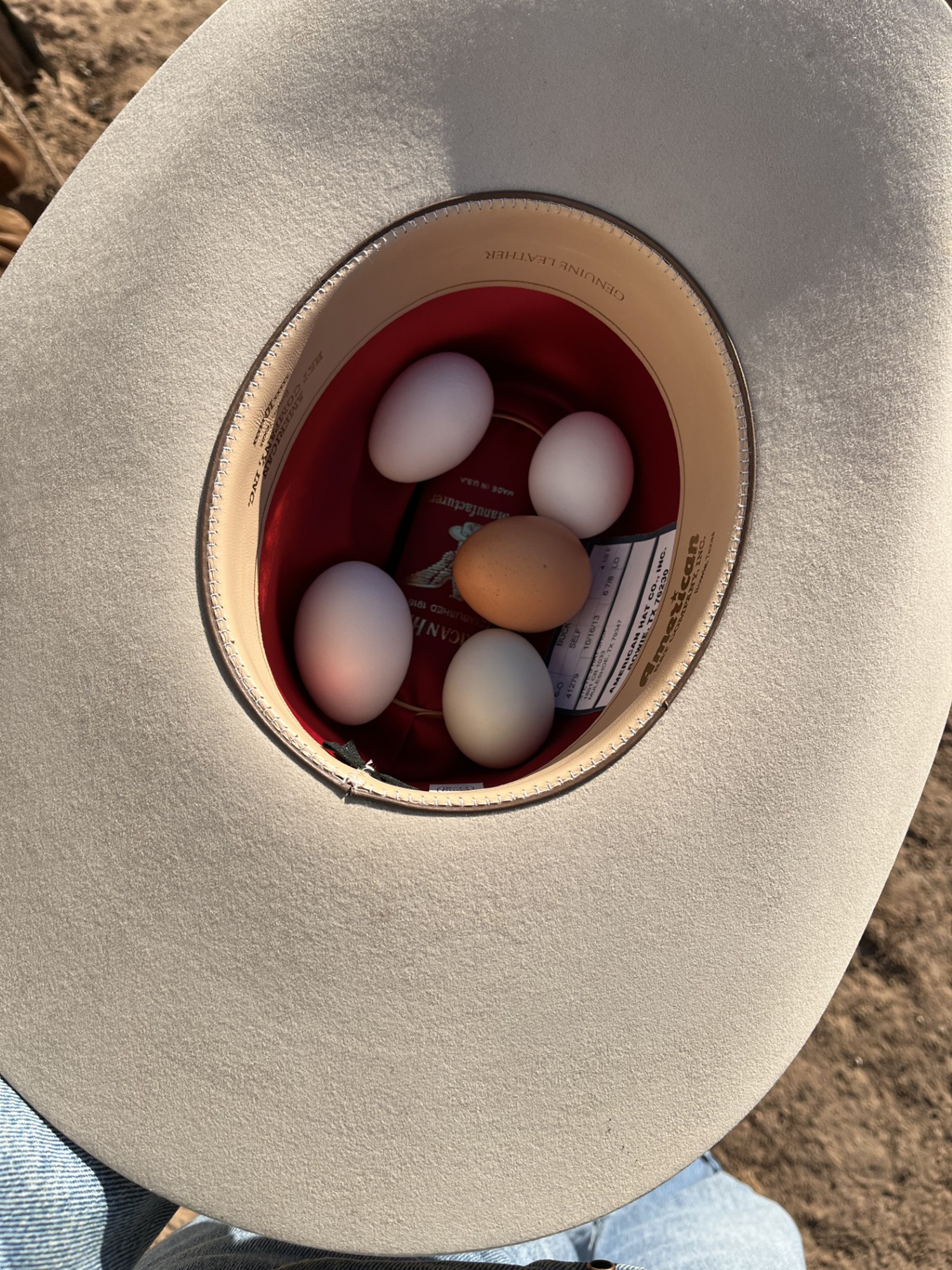
By Summer McMillen
All my married life I have thought that when husbands all got together horseback after a hard days work they were probably rating their wives on a scale from one to ten based on their various capabilities. Did Wife A have a good hat crease? Was Wife B good help in the branding pen? Was Wife C an excellent mother? Was Wife D hospitable to everyone? Could Wife E make a decent gallon of sweet tea? Did Wife F keep a tidy saddle house?
Presumably, when Wife B did not live up to Wife A there was a fist fight followed by wife shaming of Husband B. His status amongst the cowboys immediately fell and he would be behind for the rest of his life in his cowboy career.
He would come home ashamed his wife couldn’t flambé a decent bananas foster and she couldn’t hoolihan either. He would be distraught and said wife would feel his pain.
Of course, this never happened to me like I thought it would. My husband always came home with a smile on his face and I’m pretty sure “flambé” isn’t even in a cowboys vocabulary.
Nonetheless, these imaginary fights and social rankings have plagued my brain for years. It has caused me to always be in competition with myself to be the very best at everything I did. Which I have eventually realized is a trait of women all around the world.
While we are cooking a four course meal for our families we start to think about how we actually should be practicing heading steers instead.
While we are practicing our horsemanship we start to think about how we should actually be preparing a nutritious and elaborate meal for our families.
It is a constant battle that women have created and proceeded to fight for centuries.
One day the inner battle got to me and I finally broke down as we were riding wheat pasture and confessed to my husband my guilt. I was so sorry that I wasn’t a better cowgirl. I was so sorry that the house was a mess. I was so sorry that I would never be on The Cowboy Channel. I was so sorry that I had lost his good pair of gloves. (Except I didn’t actually mean to confess that last part. Some things are just better left unknown.) I apologized again and again and told him I was sorry and he probably never wanted to bring his friends over for supper ever again.
Instead of consoling me, he just started looking at me like I was crazy. Which is what all good husbands do.
He stopped his horse and looked at me and said “Do you know how cowboys rate each other’s ranch wives?”
So many thoughts started filling my brain. Was it looks? Gentleness? Laundry speed? Work ethic?
Then he revealed their secret. “Cowboys rate each other’s wives by how well they can cook eggs for breakfast.”
His point of course, was that men don’t think about each other’s wives. As long as they get their eggs for breakfast. In another twist of irony, my husband taught me how to fry the perfect egg. What can I say? It’s a man’s world.
Since then, I have let go of my irrational fears and doubt and have simply been living life. It’s all anyone can do. I may not team rope the best. I may get my fingers when I’m trying to dally and I may not have the tidiest saddle house. But I try hard at everything I do and I do it all out of love for my family and finally, myself.
So, if you’re a woman this Mother’s Day and you catch yourself feeling down amongst life constant pressures just remember you are not alone. You can almost guarantee there is a woman in every household that needs a little pick me up. Maybe you should just go outside. Maybe you should sit down and count your blessings. Or, maybe you should have your husband fry you some eggs.
-

 Attractions8 years ago
Attractions8 years ago48 Hours in Atoka Remembered
-

 Country Lifestyle8 months ago
Country Lifestyle8 months agoJuly 2017 Profile: J.W. Hart
-

 Country Lifestyle9 years ago
Country Lifestyle9 years agoThe House a Treasure Built
-

 Country Lifestyle3 years ago
Country Lifestyle3 years agoThe Two Sides of Colten Jesse
-

 Outdoors7 years ago
Outdoors7 years agoGrazing Oklahoma: Honey Locust
-

 Equine8 years ago
Equine8 years agoUmbilical Hernia
-

 Outdoors5 years ago
Outdoors5 years agoPecan Production Information: Online Resources for Growers
-

 Farm & Ranch7 years ago
Farm & Ranch7 years agoHackberry (Celtis spp.)

